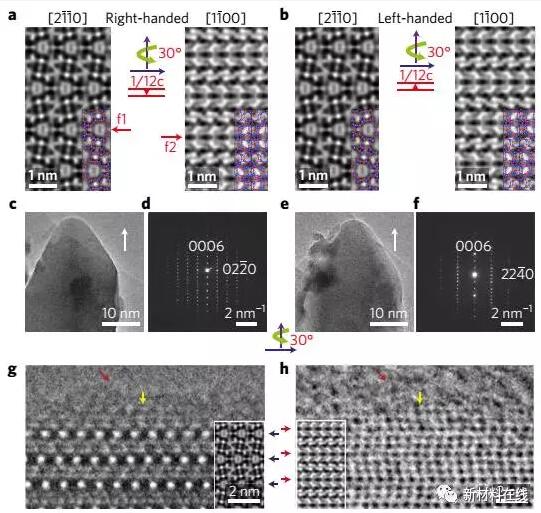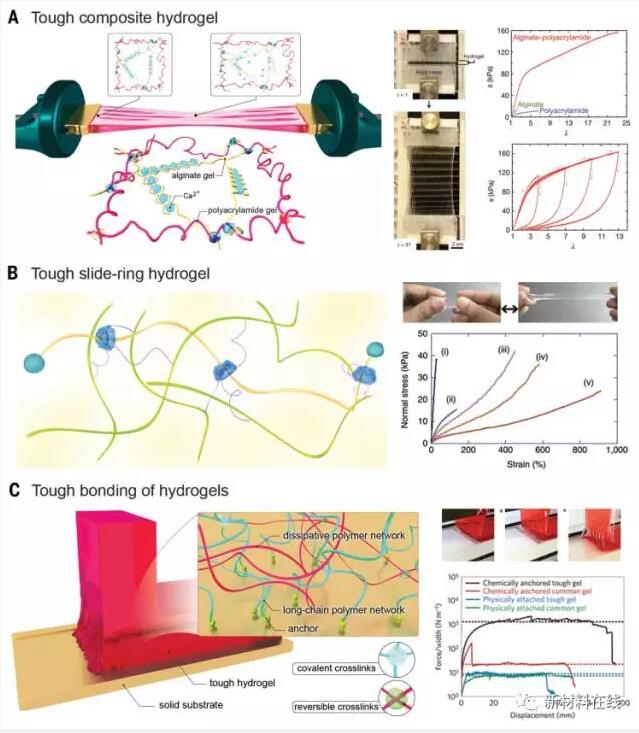Abstract 1. Selective anaerobic oxidation of methane directly synthesizes methanol (Selectiveanaerobicoxidationofmethaneenablesdirectsynthesisofmethano...
1. Selective anaerobic oxidation of methane to directly synthesize methanol
(Selectiveanaerobic oxidation of methane enables direct synthesis of methanol)
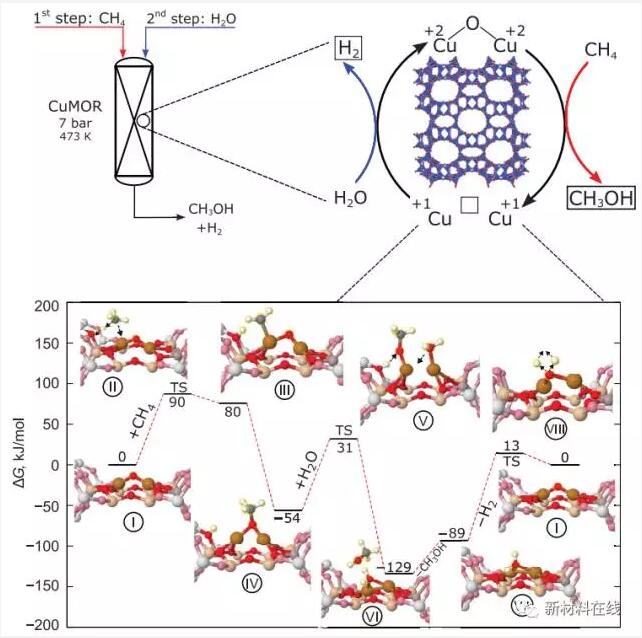
The direct functionalization of methane in natural gas is still a key challenge to date. Sushkevich et al. proposed a direct and stepwise method for converting methane to methanol with high selectivity (~97%) by copper-containing zeolite based on partial oxidation with water. Activation at 673 K, followed by continuous exposure of the catalyst to 7 bar of methane followed by 473 K of water, so that 0.204 moles of CH3OH can be continuously produced per mole of copper in the zeolite. Isotopic labeling confirms the use of water as a source of oxygen to regenerate zeolite as the active center, giving methanol a better desorption capacity. Based on in-situ X-ray absorption spectroscopy, infrared spectroscopy, and density functional theory calculations, Sushkevich et al. proposed a mechanism for methane oxidation at the CuII oxide active center, which was then reoxidized by water CuI and accompanied by hydrogen formation. (Science DOI: 10.1126/science.aam9035)
2. Thermal processing of diblock copolymer melts to simulate metallurgy
(Thermal processingof diblock copolymer melts mimics metallurgy)
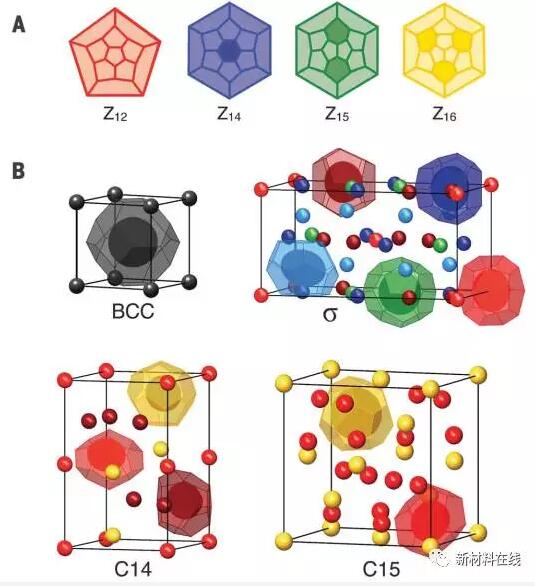
Small angle X-ray scattering experiments using low molar mass poly(isoprene)-b-poly(lactide) diblock copolymers with heterogeneous compositions exhibit extraordinary thermal history dependence. The change in crystal or non-periodic quasicrystal state in different periods depends on how the sample cools from the disordered state to a temperature below the disordered transition temperature. Direct cooling results in the formation of an existing recorded morphology, and rapid quenching of the sample from the low temperature begins to form the hexagonal C14 and cubic C15 Leves phases normally present in the metal alloy. The self-consistent mean field theory calculations show that these and other related Frank-Kasper phases have almost degenerate free energy, which indicates that the processing history drives the material into a long-lived metastable determined by discrete volume, polyhedral shaped self-assembled particles. state. (Science DOI: 10.1126/science.aam7212)
3. Electronic crystallography for determining the chirality of chiral zeolite nanocrystals
(Electron crystallography for determining the handedness of a chiralzeolite nanocrystal)
Chiral crystals can be used for chiral resolution and catalysis applications. However, the study of atomic chirality in submicron crystals is still difficult due to the lack of adequate characterization methods. Ma et al. proposed two effective and practical characterization methods based on electron crystallography. These methods have been successfully applied to reveal the chirality of chiral zeolite nanocrystals. They determine the hand by comparing the high-resolution transmission electron microscopy images taken from the same nanocrystals along their different screw axes along the different axis of the axis, or by the asymmetry of the reflection intensity in Bijvoet in a single precession electron diffraction pattern. Sex. These two methods provide a new way to determine the chirality of tiny chiral crystals. (Nature Materials DOI: 10.1038/NMAT4890)
4. Synthesis of Ti3AuC2, Ti3Au2C2 and Ti3IrC2 by noble metal substitution reaction
(Synthesis of Ti3AuC2, Ti3Au2C2 and Ti3IrC2 by noblemetal substitution reaction in Ti3SiC2 for high-temperature-stableOhmic contacts to SiC)
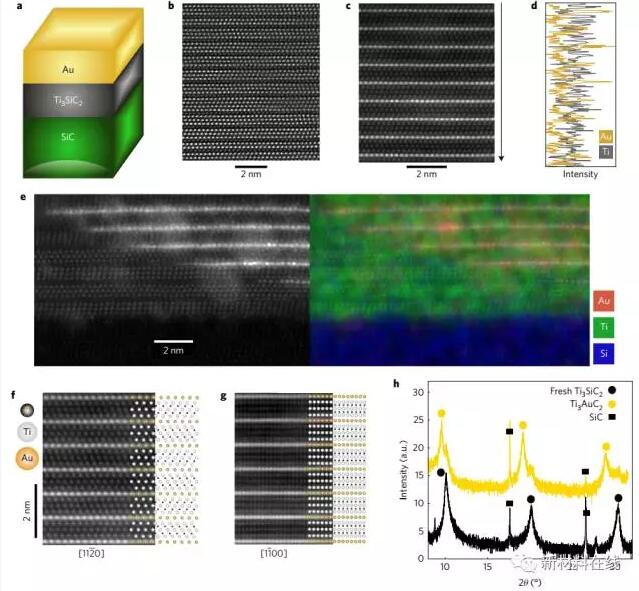
Layered ceramics include van der Waals (vdW) and non-Van der Waals solids from a broad category. Although it is well known to embed precious metals in vdW solids, the formation of compounds by embedding noble metal layers in non-vdW layered solids has largely not been explored. Fashandi et al. demonstrated the simultaneous diffusion of Si into the Ti3SiC2 single crystal film by solid-phase reaction of Au to form Ti3AuC2 and Ti3Au2C2 phases with lattice expansion of up to 31%. Subsequent substitution of Au in Ti3Au2C2 by Ir produces Ti3IrC2. These phases form ohmic electrical contact with SiC and remain stable after aging for 1000 hours at 600 ° C in air. By analyzing electron microscopy and ab initio calculations, new processes have been developed that have previously been unrealized with precious metal layered ceramics that have tunable properties for stable electrical contact with high temperature power electronics or gas sensors. (Nature Materials DOI: 10.1038/NMAT4896)
5. Magnetic exchange field enhances valley splitting in single-layer WSe2
(Enhanced valley splitting inmonolayer WSe2 duetomagnetic exchange field)
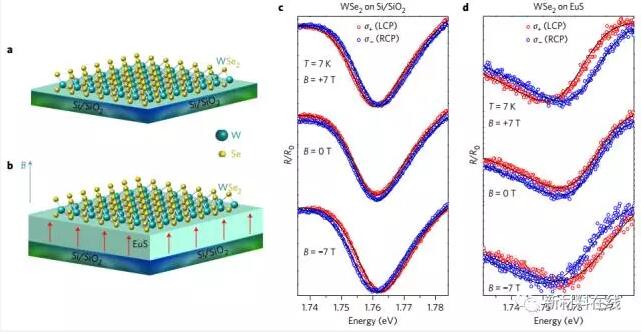
Using valley degrees of freedom to store and manipulate information provides a new paradigm for future electronics. A single-layer transition metal dichalcogenide (TMDC) with breaking reversal symmetry has two degenerate but non-equivalent valleys, thereby providing a unique opportunity for valley control through the helicity of light. It has recently been demonstrated that the valley degeneracy is enhanced by Zeeman splitting, whereby it is possible to control the valley using a magnetic field. However, the achieved valley split is not too large (~0.2 meV·T-1). Zhao et al. demonstrated the greatly enhanced valley splitting in single-layer WSe2 using an interface magnetic exchange field (MEF) from a ferromagnetic EuS substrate. A 2.5 mV valley split in the 1T case was demonstrated by magnetic reflectance measurements, corresponding to an effective exchange field of approximately 12T. In addition, the split follows the magnetization of EuS, which is the hallmark of MEF. MEFs using magnetic insulators can cause magnetic order and valleys and spin polarization in TMDC, which may be used to implement valley electron and quantum computing applications. (Nature Nanotechnology DOI: 10.1038/NNANO.2017.68)
6. Multivalent, bispecific nanobioconjugates for targeted cancer immunotherapy
(Multivalent bi-specific nanobioconjugate engager for targeted cancer immunotherapy)
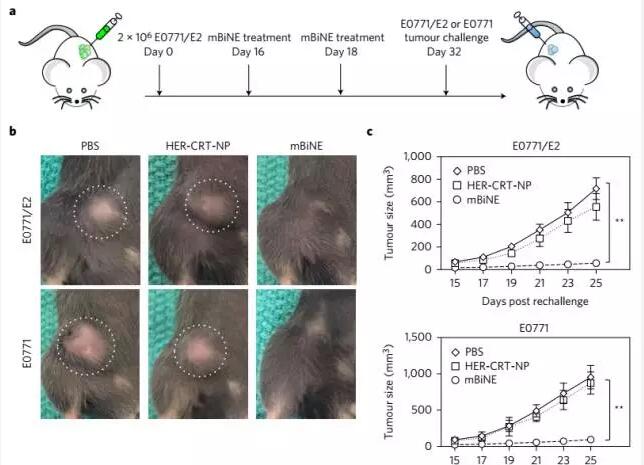
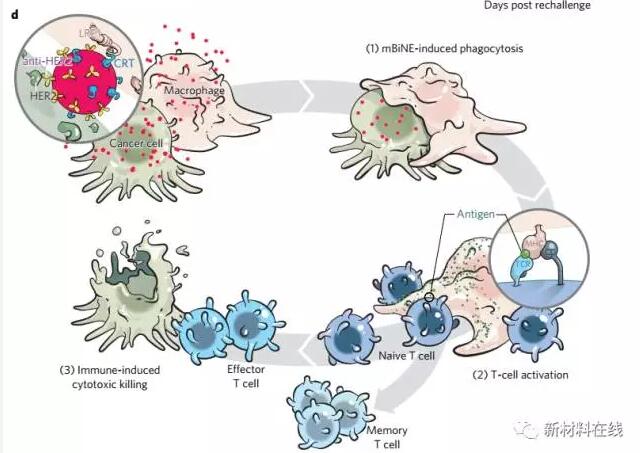
Tumor-targeted immunotherapy has the unique advantage of being able to reduce specific tumor killing effects of immune-related toxicity. However, existing platforms have low efficacy, are incapable of producing long-term immunological memory, and are less active against subpopulations of tumor cells at low target receptor levels. Yuan et al. used a modular design approach using colloidal nanoparticles as a substrate to generate multivalent bispecific nanobioconjugates (mBiNE) to promote selective immune-mediated eradication of cancer cells. By simultaneously targeting human epidermal growth factor receptor 2 (HER2) expressed by cancer cells and a phagocytic signal regulated by calreticulin, mBiNE is able to stimulate HER2-targeted phagocytosis and produce durable anti-tumor HER2 expression resistance. Tumor immune response. Interestingly, although the initial immune activation regulated by mBiNE is body-dependent, subsequent anti-tumor immunity also produces a protective effect against the tumor cell population lacking the HER2 receptor. Therefore, mBiNE represents a new targeted nanomaterial immunotherapy platform for stimulating innate and adaptive immunity and promoting universal anti-tumor responses. (Nature Nanotechnology DOI: 10.1038/NNANO.2017.69)
7. Tunneling spectra of Andreev states in graphene
(Tunnellingspectroscopy of Andreev states in graphene)
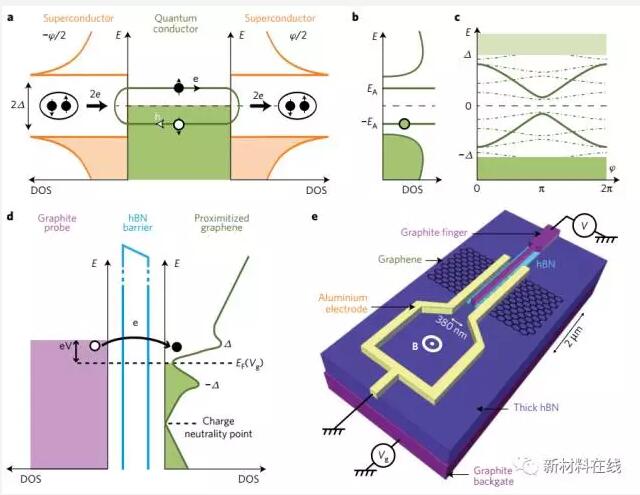
A normal conductor that is in good contact with a superconductor can inherit its superior electronic properties. This proximity effect results from the formation of an entangled electron-hole state in the conductor, also known as the Andreev state. Spectral studies of the Andreev state have been studied in a few systems. The unique geometry, electronic structure and high mobility of graphene make it a new platform for studying Andreev physics in two dimensions. Bretheau et al. used a complete van der Waals heterostructure to tunnel spectroscopy measurements of proximity effects in superconductor-graphene-superconductor junctions. The measured energy spectrum depends on the phase difference between the superconductors, indicating the existence of a continuous Andreev bound state. Moreover, the geometry and materials of the device heterojunction enable the measurement of the Andreev spectrum as a function of graphene Fermi energy, which demonstrates the transition between different mesoscopic systems. In addition, Bretheau et al. introduced a new concept, super-current spectral density, to establish the relationship between Andreev physics and Josephson effect on finite energy by determining the phase relationship of super-current in tunnel experiments. This work opens up new avenues for exploring the heterogeneous topology of mixed superconducting Dirac materials. (Nature Physics DOI: 10.1038/NPHYS4110)
8. Research progress in hydrogel regulation
(Advances in engineeringhydrogels)
Hydrogels are composed of hydrophilic polymer chains surrounded by a water-rich environment and are widely used in various fields such as biomedicine, soft electronics, sensors and actuators. Conventional hydrogels typically have limited mechanical strength and are prone to breakage. Moreover, hydrogels limit their function due to the lack of structural complexity. Recent advances include gel regulation with improved physicochemical properties, ranging from innovative chemical reactions to chemical composition design to kinetic adjustment and integration of complex structures. Zhang et al. reviewed the major advances in the design and fabrication of hydrogels and have important implications for accurately manipulating their performance on multiple scales. (Science DOI: 10.1126/science.aaf3627)
Fold polyester insect screen
Fold Polyester Insect Screen,Plisse Mosquito Screen Mesh,Fiberglass Folded Fly Screen,Polyester Pleated Net Mesh
wuqiang huihuang fiberglass factory , https://www.hh-windowmesh.com


